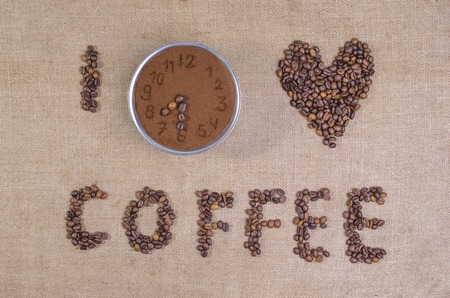Introduction to Latte Art in the UK
Coffee has woven itself into the fabric of British daily life, evolving far beyond its traditional roots of tea-drinking culture. Across bustling cities and quiet villages alike, coffee shops have become community hubs, with latte art emerging as a symbol of quality and craftsmanship. In recent years, a new wave of home baristas has swept across the UK, driven by a passion for specialty coffee and the desire to recreate café-quality experiences at home. For many, mastering latte art is not simply about aesthetics—it’s a celebration of skill, creativity, and hospitality. The craft carries cultural significance as it reflects both the sophistication of Britain’s contemporary coffee scene and a commitment to elevating everyday rituals. Whether you’re in London or Leeds, pouring a perfect rosette or heart atop your morning flat white has become a point of pride for coffee enthusiasts nationwide. This guide is designed for UK home baristas who are eager to learn the foundations and finer points of latte art, blending professional techniques with insights tailored to the British palate and lifestyle.
2. Essential Tools and Ingredients for British Home Baristas
Achieving exceptional latte art at home starts with selecting the right ingredients and tools, especially when catering to the preferences and availability within the UK market. This section will guide you through making informed choices, from coffee beans and milk to essential barista equipment.
Coffee Beans: Selecting Quality for British Palates
The foundation of any good latte is freshly roasted coffee beans. For UK home baristas, sourcing beans from local roasteries ensures freshness and supports the growing specialty coffee scene across Britain. Opt for beans with flavour profiles that suit your preference—whether you favour nutty, chocolatey notes typical of Central and South American origins or more vibrant, fruity profiles from East African coffees. Always check roast dates and choose whole beans over pre-ground for maximum flavour retention.
Recommended Coffee Bean Sources in the UK
| Roastery | Region | Notable Features |
|---|---|---|
| Square Mile Coffee Roasters | London | Specialty blends, direct trade, sustainable practices |
| Origin Coffee | Cornwall | Single-origin options, ethical sourcing, UK-wide delivery |
| North Star Coffee Roasters | Leeds | Diverse flavour profiles, local partnerships, education focus |
Milk Selection: Achieving Perfect Microfoam in the UK Context
The choice of milk significantly influences both taste and texture in your latte art. Whole milk is preferred for its higher fat content, which aids in creating a creamy microfoam ideal for pouring intricate designs. For those seeking plant-based alternatives—such as oat or almond milk—opt for barista blends designed to steam well without splitting. Popular UK brands like Oatly Barista Edition and Minor Figures are widely available at supermarkets and independent grocers.
Milk Options Comparison Table
| Type | Main Benefits | Best For Latte Art? | UK Availability |
|---|---|---|---|
| Dairy (Whole Milk) | Creamy mouthfeel, stable foam | Yes (Excellent) | Nationwide supermarkets & dairies |
| Oat (Barista Edition) | Smooth texture, neutral flavour, vegan-friendly | Yes (Very Good) | Tesco, Sainsburys, Waitrose, independents |
| Soy (Barista Blend) | Mild flavour, foams well if formulated for baristas | Yes (Good) | Larger supermarkets & health food shops |
| Almond (Barista Blend) | Nutty undertones, lighter body | Moderate (May split with heat) | Larger supermarkets & independents |
The Barista’s Toolkit: Must-Have Equipment for UK Homes
- Coffee Grinder: A burr grinder is essential for consistent grind size; popular brands include Wilfa and Baratza.
- Espresso Machine: Entry-level machines like Sage Bambino Plus or Gaggia Classic Pro offer reliable performance for home use.
- Milk Frothing Jug: Choose a stainless steel jug with a pointed spout (350ml-600ml) to allow precise control during pouring.
- Tamper: Ensure your espresso grounds are evenly compressed; look for ergonomically designed tampers suited to your machine’s portafilter size.
- Coffee Scales: Invest in digital scales accurate to 0.1g for consistency when dosing espresso shots.
Sourcing Tips for UK Baristas:
- Check reputable retailers such as Hasbean or Coffee Hit for equipment tailored to British homes.
- Join local coffee forums or Facebook groups to discover second-hand bargains or recommendations based on real user experience.
- Coffee Grinder: A burr grinder is essential for consistent grind size; popular brands include Wilfa and Baratza.
- Espresso Machine: Entry-level machines like Sage Bambino Plus or Gaggia Classic Pro offer reliable performance for home use.
- Milk Frothing Jug: Choose a stainless steel jug with a pointed spout (350ml-600ml) to allow precise control during pouring.
- Tamper: Ensure your espresso grounds are evenly compressed; look for ergonomically designed tampers suited to your machine’s portafilter size.
- Coffee Scales: Invest in digital scales accurate to 0.1g for consistency when dosing espresso shots.
Sourcing Tips for UK Baristas:
- Check reputable retailers such as Hasbean or Coffee Hit for equipment tailored to British homes.
- Join local coffee forums or Facebook groups to discover second-hand bargains or recommendations based on real user experience.
Selecting quality ingredients and the right tools lays a solid foundation for mastering latte art at home. By leveraging the best of what the UK market offers—from locally roasted beans to purpose-built equipment—you’ll be set up for success as you progress from beginner basics to latte art mastery.

3. Mastering Espresso and Milk Steaming Techniques
Achieving stunning latte art at home begins with the foundations: expertly extracted espresso and perfectly textured milk. British home baristas face unique challenges, from variable water hardness to a wide range of popular domestic coffee machines. Here’s a step-by-step approach tailored for UK enthusiasts aiming for professional-level results.
Extracting the Perfect Espresso Shot
Step 1: Prepare Your Equipment
Start by purging your machine and ensuring your portafilter is clean and dry. Freshness is crucial, so use recently roasted beans ground just before brewing. For most UK tap water, consider using a water filter or remineralised bottled water—this can help mitigate limescale buildup and achieve more consistent extraction, especially in hard-water regions like London.
Step 2: Dose and Distribute
Weigh out your coffee dose (typically 18-20g for a double shot). Use a distribution tool or gentle tapping to create an even bed before tamping firmly and levelly. This minimises channeling—a common pitfall that leads to uneven extraction.
Step 3: Extraction Timing
Brew with water between 92–96°C (197–205°F). Aim for a 1:2 ratio (e.g., 18g in, 36g out) over 25-30 seconds. Watch for a steady flow resembling warm honey, indicating balanced flavour and crema formation. If your espresso tastes sour or watery, adjust grind size finer; if bitter or slow-flowing, go coarser.
Steaming Milk to Silky Microfoam
Step 1: Choose the Right Milk
Whole milk creates the richest microfoam, but semi-skimmed works well too. For plant-based alternatives popular in the UK—such as oat or almond—select barista blends designed for steaming.
Step 2: Purge and Position
Purge the steam wand to clear condensation. Submerge the tip just below the milk surface, angled towards the jug’s spout.
Step 3: Stretch and Texture
Turn on the steam and introduce air by keeping the tip near the surface until you hear gentle hissing (the ‘chirping’ sound). Once milk volume increases by about 50%, submerge the wand deeper to circulate milk in a whirlpool motion—this breaks down larger bubbles into velvety microfoam.
Step 4: Finishing Touches
Stop steaming when the jug feels just too hot to touch (around 65°C/150°F). Tap gently on the counter and swirl to integrate any remaining bubbles for glossy texture—the hallmark of pour-ready microfoam essential for sharp latte art patterns.
Top Tips for UK Home Machines
- Descale Regularly: Hard water is prevalent in many UK areas; descale your machine monthly to maintain pressure and temperature consistency.
- Practice Consistency: Domestic machines may produce less steam power than commercial ones; patience and practice with stretching time will yield better foam.
- Experiment with Water: If your area has very soft or hard water, try blending filtered tap with bottled mineral water to optimise taste and machine health.
Nailing these espresso and milk techniques will provide a solid canvas for your latte art adventures, setting you up to impress friends or simply savour café-quality cups from your own kitchen.
4. Foundational Latte Art Patterns
For aspiring UK home baristas, mastering the foundational latte art patterns is an essential step in elevating your coffee craft. The heart, rosette (or “fern”), and tulip are classic designs found in Britain’s best independent cafés, and they serve as a practical starting point for anyone keen to impress guests or simply enrich their daily brew. Below, we break down each pattern with key techniques, common mistakes, and handy troubleshooting tips tailored to those just beginning their latte art journey.
The Heart
Technique: Begin by holding your cup at a slight angle. Start pouring steadily from a height of 5-7cm to integrate the milk with the espresso. As the cup fills, lower the jug close to the surface, increase the flow rate, and pour into the centre. Once a white circle forms, gently lift and cut through with a swift motion.
| Step | Tip | Common Pitfall |
|---|---|---|
| Pourover Height | Start higher for integration; finish close for definition | Poor contrast if jug is too far away throughout |
| Cup Angle | Slight tilt aids layering effect | Spilling or uneven shape if too steep |
| Cut Through | Confident pull creates clear tip at bottom of heart | No cut = round blob; shaky hand = wobbly heart |
The Rosette (Fern)
Technique: With the cup held steady and slightly tilted, pour a thin stream of milk into one spot while gently moving the jug side-to-side. Gradually draw backwards as you wiggle, then finish with a quick pull-through to define the stem.
| Step | Tip | Common Pitfall |
|---|---|---|
| Wiggle Motion | Small, controlled shakes yield even leaves | Tight grip leads to jagged lines or blobs |
| Backward Movement | Smooth pull back stretches out pattern gracefully | No movement = stacked rings instead of fern leaves |
| Final Pull-Through | Crisp line defines fern’s stem and adds finesse | No pull = unfinished look; overpull = smudged design |
The Tulip
Technique: Pour a small blob for the base, stop, then repeat twice more above each previous layer. Finish with a gentle lift and cut through all layers for that iconic British café tulip.
| Step | Tip | Common Pitfall |
|---|---|---|
| Pourover Blobs (Layers) | Pace yourself—pause between pours for definition | Pours too close together merge into one blob |
| Lifting Jug Between Layers | Lifting resets flow for crisp edges | No lift = layers blend, losing sharpness |
| Cut Through | Straight confident pull keeps layers intact | Zigzag or hesitant cut distorts design |
Troubleshooting Tips for First-Time Home Baristas:
- If your patterns lack contrast, revisit your milk texture—aim for glossy microfoam without large bubbles.
- Aim for consistency in your espresso extraction; under-extracted shots can muddy your canvas.
- If designs blur or sink, let your steamed milk settle for 10 seconds before pouring to separate foam from liquid.
A Final Note on Practice & Patience:
Remember, even seasoned baristas across Britain started with wonky hearts and splodgy ferns. With regular practice and a keen eye for detail, you’ll soon be pouring café-worthy art in your own kitchen—right proper!
5. Advancing Your Skills: Creative Art and Personal Touches
Once you’ve mastered the essentials of latte art, it’s time to push your creative boundaries and truly make each cup your own. Progressing from basic hearts and rosettas, you can begin experimenting with more intricate designs that showcase both technique and individuality. Start by refining your control over milk texture and pour speed, as these will be crucial for executing complex patterns such as swans, tulips, or even multi-layered designs. As a UK home barista, why not draw inspiration from British culture? Try incorporating motifs like the Union Jack, iconic London skylines, or even subtle nods to classic British flora—think delicate roses or oak leaves. These personal touches don’t just impress guests; they also make your daily coffee ritual uniquely yours. Practice is key—set aside time to experiment with different pours and etching tools, perhaps even using a cocktail stick to add fine details. Remember, every mistake is a learning opportunity. Engage with the vibrant UK coffee community online or at local workshops to share tips and gain feedback. By infusing your latte art with a bit of British charm and personal flair, you’ll elevate your skills from competent to truly memorable, turning each cup into a canvas that reflects both technical mastery and creative expression.
6. Common Challenges and Solutions for UK Home Baristas
Perfecting latte art at home can be both rewarding and occasionally frustrating, especially when British kitchens present their own unique set of obstacles. Let’s delve into the most common issues UK home baristas face and provide practical solutions tailored to the local context.
Troubleshooting Milk Texture
Many UK home baristas find it tricky to achieve that sought-after microfoam consistency. Factors such as colder ambient temperatures, varying milk brands, and domestic steam wands all play a part. If your foam is too bubbly or too thin, consider these tips:
Milk Choice Matters
Opt for fresh, whole milk from British dairies for a richer texture. If you prefer plant-based alternatives, look for ‘barista’ versions available in most UK supermarkets—they’re formulated to froth better.
Steaming Technique
Pre-warm your jug and start with cold milk straight from the fridge. Position your steam wand just below the surface to introduce air, then submerge it slightly to create a whirlpool effect. This helps break down larger bubbles and integrates the foam smoothly.
Nailing the Temperature
British weather can cool your espresso and milk faster than you’d like. Aim for a milk temperature between 60–65°C (140–149°F)—use a thermometer if you have one, or stop steaming when the jug becomes almost too hot to touch but not scalding. Overheated milk loses sweetness and makes pouring difficult.
Pouring With Precision
Steady hands are essential, but so is timing. Start pouring slowly from a height to integrate milk and espresso, then lower the jug closer for pattern formation. If your designs blur or sink, your foam might be too dense or your pour too aggressive. Practice controlling your flow rate—consistency comes with repetition.
UK-Specific Tip
If using classic British teacups or smaller mugs, adjust your technique accordingly; these shapes can make certain latte art patterns more challenging but also more rewarding when mastered.
Consistency Is Key
The journey to reliable results involves patience and tweaking variables: grind size, tamp pressure, milk type, and even water quality (consider filtered water to avoid limescale build-up in hard-water areas). Keep a brewing diary to note what works best in your kitchen environment—it’s a tried-and-true approach among Britain’s top home baristas.
Overcoming these challenges is part of the fun. By understanding each stumbling block and applying these troubleshooting tips, you’ll move ever closer to mastering latte art in your own British home.
7. Building Your Home Barista Community in the UK
Latte art is more than just a solitary pursuit; it thrives on shared experiences, constructive feedback, and a sense of camaraderie among fellow enthusiasts. As a home barista in the UK, there are plenty of ways to connect with others who share your passion for coffee and latte artistry.
Connecting with Other British Coffee Enthusiasts
Start by joining online forums and social media groups dedicated to UK-based coffee lovers. Platforms such as Reddit’s r/CoffeeUK or Facebook groups like “UK Home Baristas” offer spaces to ask questions, exchange tips, and celebrate each others progress. Engaging in these communities can provide invaluable insights into local trends, equipment recommendations, and troubleshooting advice tailored for the British context.
Sharing Your Progress Online and Offline
Documenting your latte art journey can be both motivating and educational. Consider creating an Instagram account or TikTok profile specifically for your coffee creations—tagging posts with #UKLatteArt or #HomeBaristaUK helps you reach a wider audience of like-minded individuals. Don’t hesitate to invite friends over for a “coffee morning” or informal tasting session where you can showcase your skills and learn from one another’s techniques in person.
Participating in Local Events and Competitions
The UK boasts a vibrant specialty coffee scene, with regular events hosted by local cafés, roasters, and barista schools. Keep an eye out for latte art throwdowns, workshops, and community cuppings—these gatherings are perfect opportunities to network, receive real-time feedback from experienced baristas, and even compete in friendly challenges. Many cities also feature annual coffee festivals (such as the London Coffee Festival) where home baristas are welcome to join competitions or attend masterclasses.
By immersing yourself in both digital and physical communities across the UK, you’ll not only accelerate your own latte art mastery but also contribute to the growing culture of specialty coffee appreciation nationwide. Remember: every pour is an opportunity to connect, learn, and inspire others on their own home barista journey.


